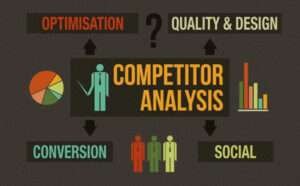
JavaScript and PHP: A Comparative Overview for Web Development
JavaScript and PHP are two of the most widely used programming languages in web development, each serving distinct roles and offering unique features. Understanding their differences and complementary functionalities is crucial for creating efficient and dynamic web applications. This extended overview explores the characteristics, uses, and interplay between JavaScript and PHP, providing a comprehensive understanding of how these languages contribute to modern web development.
JavaScript: The Client-Side Powerhouse
1. Client-Side Execution
JavaScript is primarily known for its role in client-side scripting. This means that JavaScript code is executed on the user’s browser, rather than on the server. When a user requests a web page, the server sends HTML, CSS, and JavaScript files to the client’s browser. The browser then executes the JavaScript code to provide interactive features and dynamic content. This client-side execution helps reduce server load and provides a more responsive user experience.
2. Enhancing Interactivity
JavaScript excels in making web pages interactive. It allows developers to create elements such as interactive forms, responsive animations, and real-time content updates. For example, JavaScript can be used to validate user input in forms before submission, ensuring that data is correct and reducing server-side processing. It can also animate images, change page content dynamically, and provide real-time feedback without needing to reload the entire page.
3. Document Object Model (DOM) Manipulation
One of JavaScript’s key features is its ability to manipulate the DOM. The DOM represents the structure of a web page as a tree of objects, including elements like headings, paragraphs, and links. JavaScript can interact with and modify these objects in real-time, allowing developers to update the content, structure, and style of a web page dynamically. This capability is essential for creating modern, dynamic web applications that respond to user interactions seamlessly.
4. Event Handling
JavaScript is instrumental in handling events triggered by user actions. This includes clicks, key presses, mouse movements, and more. By using event listeners, developers can execute JavaScript functions in response to these actions, enabling interactive features such as dropdown menus, modals, and form submissions. Event handling enhances the user experience by providing immediate feedback and interactive elements on the web page.
5. Front-End Development
JavaScript is indispensable for front-end development. It works alongside HTML and CSS to create engaging user interfaces and enhance user experiences. Frameworks and libraries like React, Angular, and Vue.js further extend JavaScript’s capabilities, enabling developers to build complex, scalable web applications with reusable components and efficient state management.
PHP: The Server-Side Workhorse
1. Server-Side Execution
PHP (Hypertext Preprocessor) operates on the server side, meaning that PHP code is executed on the web server before the resulting HTML is sent to the client’s browser. When a user requests a web page with PHP code, the server processes the PHP script, generates the final HTML, and then sends it to the client. This server-side execution allows PHP to perform complex data processing and interact with databases before delivering content to the user.
2. Data Handling and Processing
PHP is highly effective at handling data and performing server-side processing. It can process form submissions, interact with databases to retrieve or store information, and manage file uploads. For instance, PHP can validate and sanitize user input from forms, store data in a database, and generate custom content based on user preferences or interactions.
3. Dynamic Content Generation
One of PHP’s core strengths is its ability to generate dynamic content. PHP scripts can produce different outputs based on user interactions or data retrieved from databases. This capability is essential for creating personalized web experiences, such as displaying user-specific information, generating reports, or rendering templates that adapt to various conditions.
4. Back-End Development
PHP is a popular choice for back-end development due to its robust server-side capabilities. It handles server-side logic, data management, and integration with databases, which are crucial for building dynamic web applications. PHP can interact with various database systems, including MySQL, PostgreSQL, and SQLite, making it versatile for different project requirements.
5. Integration with Web Servers
PHP integrates seamlessly with web servers like Apache and Nginx. It is embedded within HTML files using PHP tags, which the server processes before delivering the final output to the client. This integration allows developers to combine PHP with HTML, CSS, and JavaScript to create full-featured web applications.
JavaScript and PHP: Complementary Roles
1. Combined Usage
JavaScript and PHP often work together to create comprehensive web applications. While PHP handles server-side processing and data management, JavaScript enhances the client-side experience with interactive features and dynamic content updates. For example, PHP might process a form submission and store data in a database, while JavaScript provides real-time validation and user feedback before the form is submitted.
2. Asynchronous Communication
JavaScript’s AJAX (Asynchronous JavaScript and XML) technology allows for asynchronous communication between the client and server. This means that JavaScript can send requests to a PHP script on the server without refreshing the entire page. AJAX is commonly used to load new data, submit forms, or update content dynamically, creating a smoother and more responsive user experience.
3. Frameworks and Libraries
Both JavaScript and PHP benefit from a wide range of frameworks and libraries that enhance their functionality. For JavaScript, frameworks like React, Angular, and Vue.js provide tools for building complex front-end applications. For PHP, frameworks such as Laravel, Symfony, and CodeIgniter offer robust solutions for back-end development, including features for routing, authentication, and database management.
4. Security Considerations
Security is a critical aspect of web development. JavaScript and PHP have different security considerations. JavaScript code running in the client’s browser can be exposed to various vulnerabilities, such as cross-site scripting (XSS) attacks. It’s essential to validate and sanitize input on both the client and server sides. PHP, being server-side, can handle sensitive operations and manage secure interactions with databases, but it also requires proper security practices to prevent issues like SQL injection and session hijacking.
5. Performance and Scalability
Performance and scalability are important factors in web development. JavaScript’s ability to run client-side reduces server load and can enhance performance by offloading some tasks to the user’s browser. PHP’s server-side processing, however, is crucial for handling complex logic and managing large-scale data interactions. Optimizing both client-side and server-side performance is essential for building scalable web applications.
Conclusion
JavaScript and PHP are both integral to modern web development, each playing a distinct but complementary role. JavaScript empowers front-end development with dynamic and interactive features, enhancing the user experience through client-side scripting. PHP, on the other hand, excels in server-side processing, data handling, and dynamic content generation, making it a cornerstone of back-end development.
By understanding the strengths and functions of JavaScript and PHP, developers can leverage both languages effectively to build robust, dynamic, and user-friendly web applications. Their combined usage enables the creation of seamless, interactive experiences while handling complex server-side operations, ultimately leading to more powerful and engaging web solutions.
















































